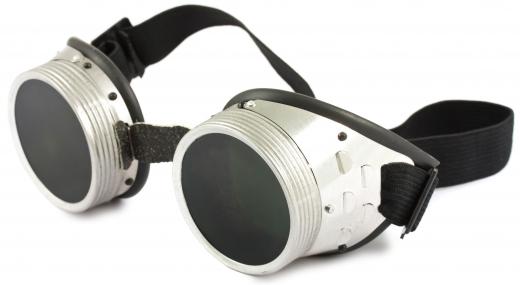A welding hammer is used to dress welds once they have cooled. Used in arc welding, the this hammer is equipped with a chisel-like pointed edge used to dislodge the slag left behind from the welding rod. It also comes equipped with a wire brush on one side that is used to remove any traces of remaining slag residue from the weld and to clean or dress the weld. The welding hammer is not used with wire welders, which utilizes gas and wire instead of a flux-covered rod to shield the weld from contaminates.
In an arc welding operation, a flux-covered welding rod is used to complete a weld. The rod is placed into the rod holder and a ground clamp is attached from the welder to the steel work piece. As the electrode or rod is struck against the steel, an arc is created, melting the welding rod into the void in the steel and creating a weld. As the welding rod is melted away, the outer flux covering made of various chemicals, melts and creates a shielding gas to protect the weld bead as it cools. The remaining slag must be removed with a welding hammer.

After the weld has cooled, the operator uses a welding hammer to remove the slag by hitting the substance with the chiseled side of the hammer. Once all of the slag is removed, the wire brush side of the welding hammer is used to dress the weld. This consists of scrubbing the weld with the wire brush, shining the weld and removing any small remaining traces of slag. This is a time-consuming yet necessary process to ensure a proper weld bead has been produced.

A welding hammer, also called a chipping hammer, is a very important tool to a welding professional. The hammers come in various styles and sizes and most welders have a preferred style. Since the operator is typically wearing heavy leather welding gloves, the hammer's handle is of particular importance. While some prefer a wooden handle, the most used welding hammers have spiral, steel-wire handles. This not only creates an easy-to-hold hammer, it makes a handle that is easily cooled when dressing very hot welds.
While the welding hammer is not required with the more modern wire feed welders, many old-school welding professionals still carry a chipping hammer. This enables them to wire brush their weld when completed.
